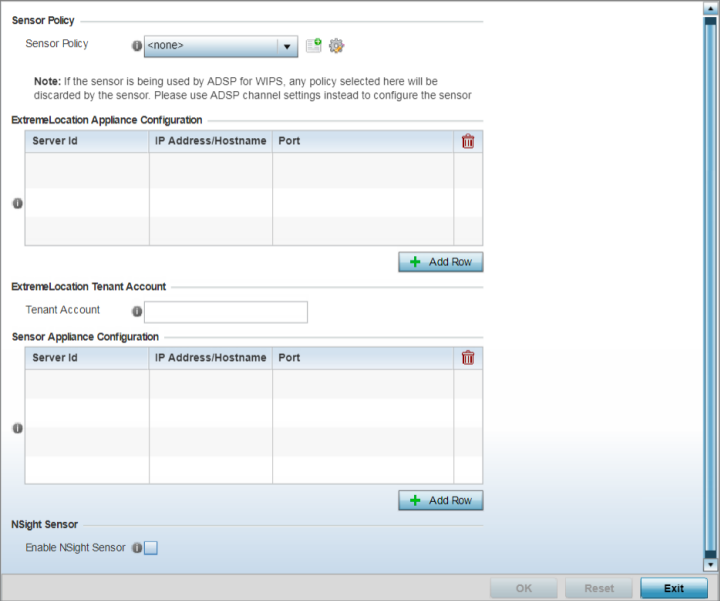RF Domain Sensor Configuration
About this task
WIPS (Wireless Intrusion Protection System) protects wireless client and access point radio traffic from attacks and unauthorized access. WIPS provides tools for standards compliance and around-the-clock wireless network security in a distributed environment. WIPS allows administrators to identify and accurately locate attacks, rogue devices and network vulnerabilities in real time and permits both a wired and wireless lockdown of wireless device connections upon acknowledgment of a threat.
In addition to dedicated AirDefense sensors, an access point radio can function as a sensor and upload information to a dedicated WIPS server (external to the access point). Unique WIPS server configurations can be used to ensure a WIPS server configuration is available to support the unique data protection needs of a RF Domain.
WIPS is not supported on a WLAN basis, rather, sensor functionality is supported on the access point radio(s) available to each managed WLAN. When an access point radio is functioning as a WIPS sensor, it is able to scan in sensor mode across all legal channels within the 2.4 and 5.0 GHz band. Sensor support requires an AirDefense WIPS Server on the network. Sensor functionality is not provided by the access point alone. The access point works in conjunction with a dedicated WIPS server.
In addition to WIPS support, sensor functionality has been added for Extreme Networks‘ ExtremeLocation system. locationing system. The ExtremeLocation system for Wi-Fi locationing includes WiNG controllers and access points functioning as sensors. Within the ExtremeLocation architecture, sensors scan for RSSI data on an administrator defined interval and send to a dedicated ExtremeLocation Server resource, as opposed to an ADSP server. The ExtremeLocation Server collects the RSSI data from WiNG sensor devices, and calculates the location of Wi-Fi devices.
To define a WIPS server configuration used with the access point‘s RF Domain:





